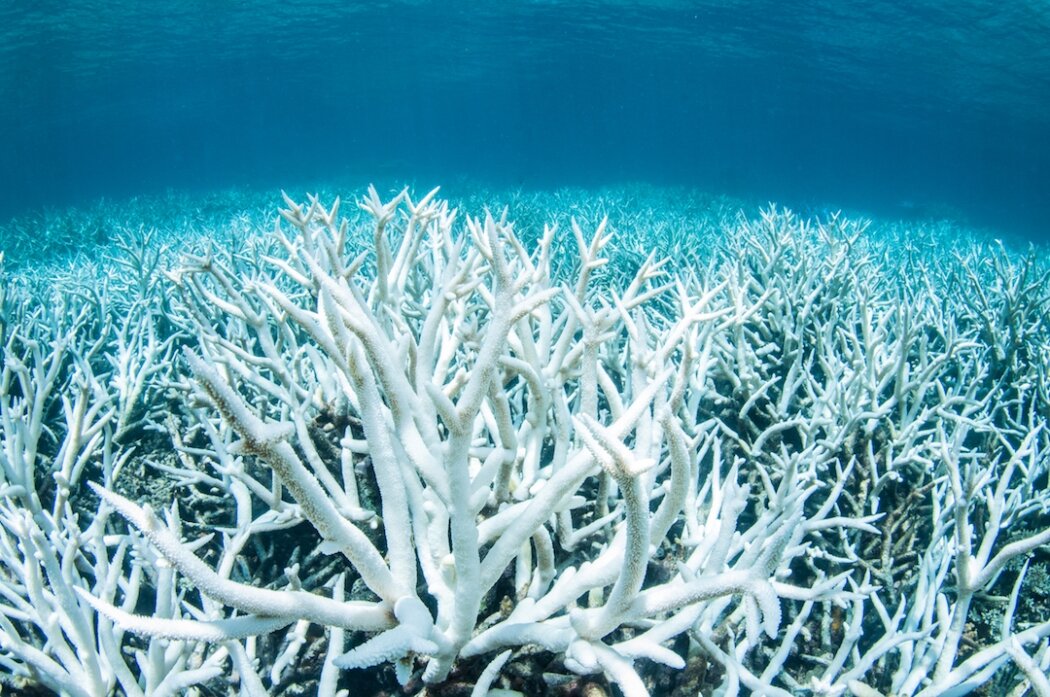
Corals are the most productive and biologically diverse ecosystems on the planet.
These tiny soft-bodied creatures build the underwater kingdoms we call reefs.
Trees of the Seas
Corals produce more oxygen and fix more carbon dioxide than trees.
They rival (if not exceed) the biodiversity of rainforests.
Capitals of the Ocean
They are home to 25% of all marine life.
Millions of species inhabit coral reefs, and there are millions of still undiscovered species living in corals — like the pygmy seahorse recently discovered that camouflages itself perfectly amongst its coral home.
Corals are the foundation of all life underwater.
Nothing else can survive without them.
Corals have been dying.

We’ve lost 50% of corals globally in the past 30 years.
All corals are expected to permanently die by 2050
if we don’t make a change.
It’s easier than you think.
There is something very easy you can do that will have a huge impact to help save the corals and save you too.
Check Your Sunscreens
check the back
and check the active ingredients.
Read to see how to determine whether your sunscreen is safe here.
The single greatest immediate — and easily controllable — threat to our coral reefs:
oxybenzone.
Oxybenzone has the same effects on all living organisms.
It is a universal endocrine disruptor — mimicking the hormone estrogen in all species — including humans.
It is rapidly absorbed (within 20 minutes), bioaccumulated within organisms, and biomagnified up the food chain.
It imitates the hormone estrogen, wreaking havoc on the entire body and every system.
The most predominant effects are infertility, feminization, and birth defects.
It is also the most commonly used active ingredient in sunscreens in the United States,
found in nearly 70% of sunscreens in the U.S.
According to a 2008 CDC Study,
oxybenzone can also be found in 97% of the American population
(present in urine within 20 minutes)
What effects does this have?
Oxybenzone is an endlessly fascinating chemical toxicant and universal endocrine disruptor, perniciously invading all living species, silently confusing and destroying them from within.
For the past year, I’ve been studying oxybenzone, continuing to dig deeper because with every step, it becomes more clear how connected everything is.
All of the effects are connected, all of the species are connected, all of the dots are connected.
It all makes perfect sense.
Now it’s just a question of educating others, and change.
Please help to be a coral hero, an ocean hero, and your own hero today.
Take the first step to see The Oxybenzone Magazine
(written to be a fun and informative but visually appealing presentation of the Oxybenzone story and how this came to be)
What Can You Do To Save The Corals?
Check your sunscreens for oxybenzone and other chemical active ingredients. Do not use them if they have chemical active ingredients.
Please tell your friends and family to check their sunscreens.
Do not use single-use plastic and try not to use plastic.
ADOPT A CORAL TODAY! Many people and groups are working to restore the corals! They are doing an amazing job! Help them to plant supercorals by adopting a coral today!
Groups such as Coral Gardeners and the Coral Restoration Foundation and many more are doing incredible work!




